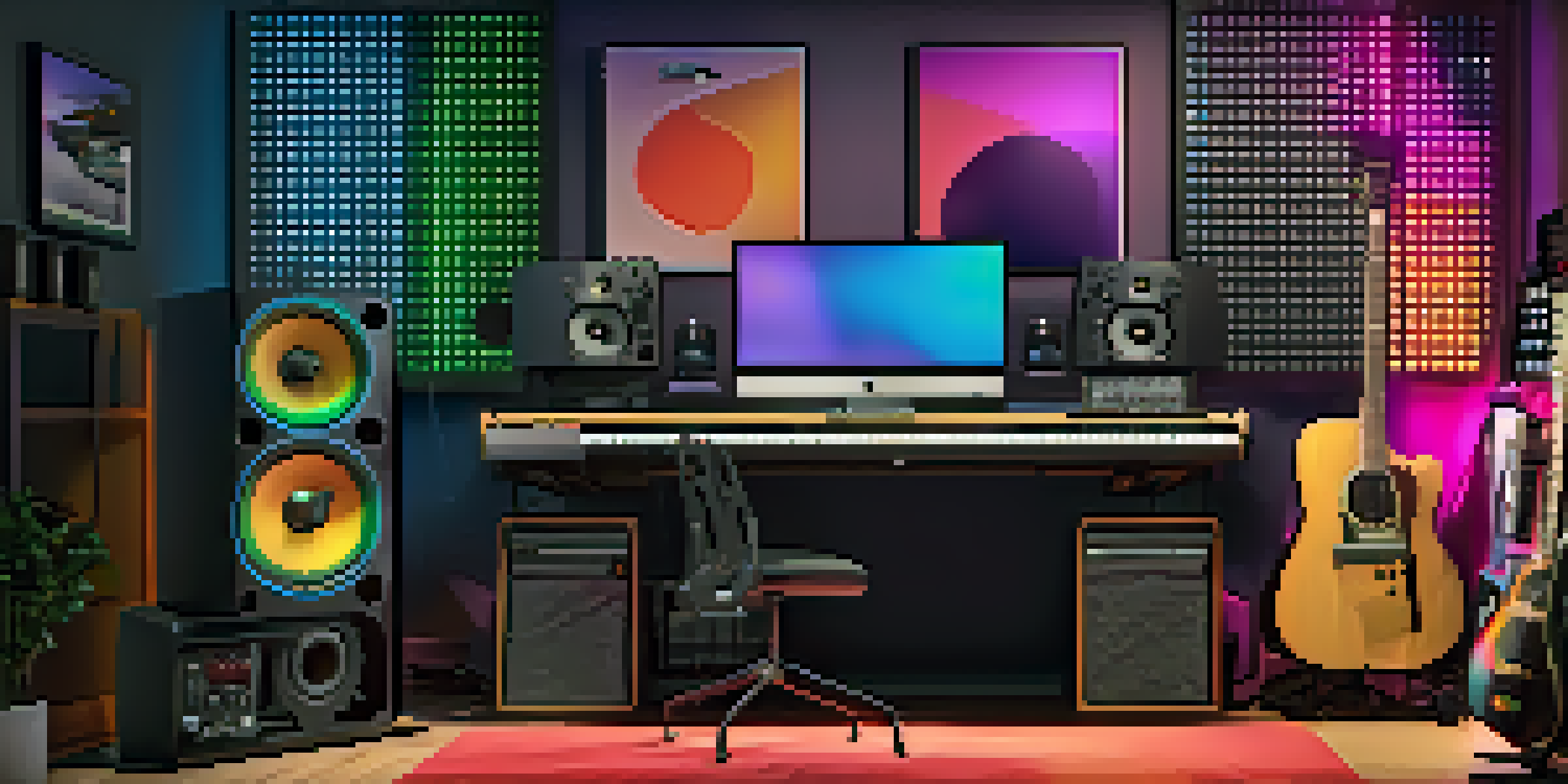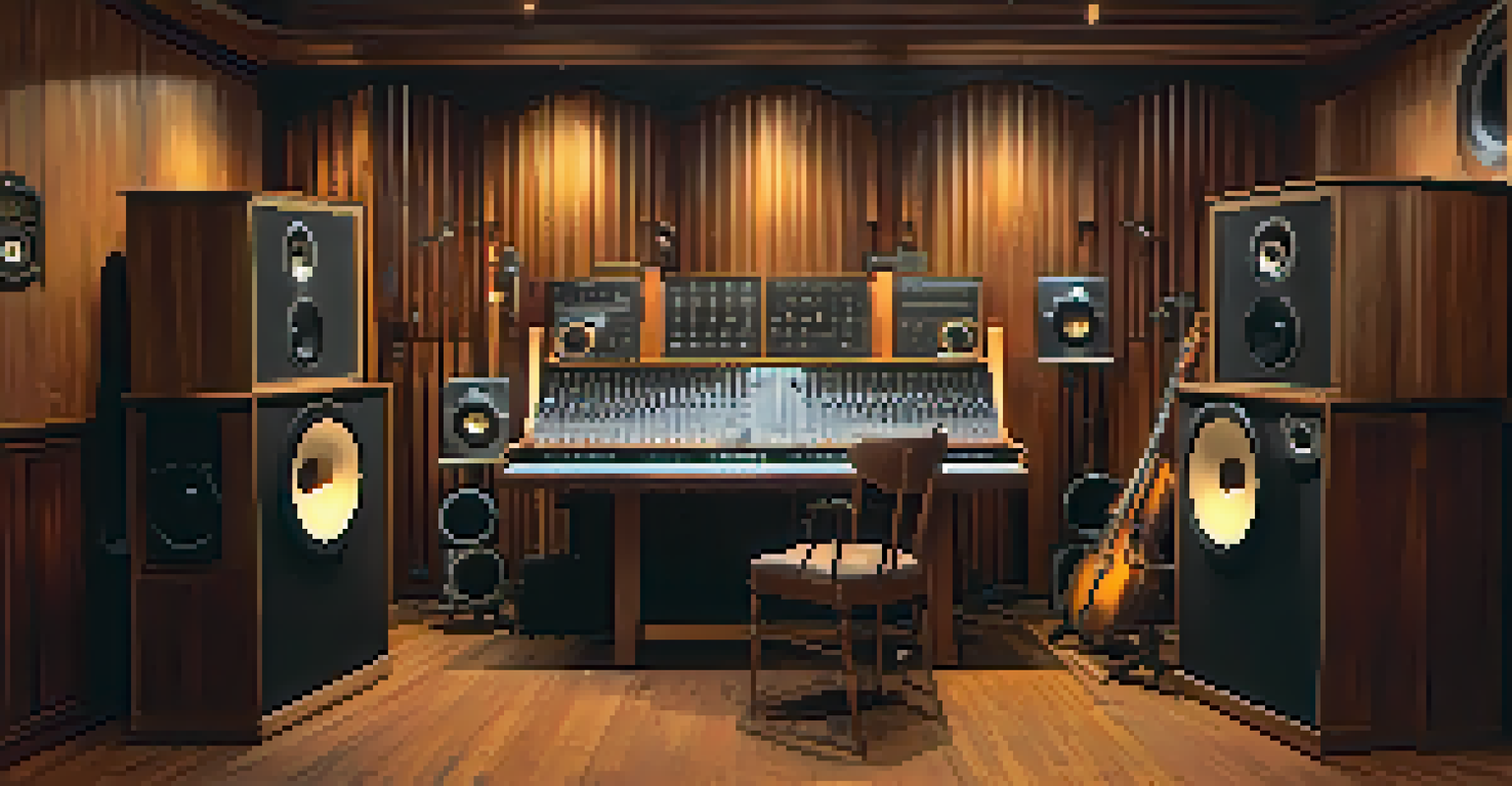The Evolution of Music Production in the Digital Age

How Music Production Started Before Digital Tools
Music production has deep roots, tracing back to the days of analog recordings. In the early 20th century, producers relied on large reel-to-reel tape machines and physical instruments to capture sound. This process was labor-intensive and required a keen ear and technical skill to mix and master tracks effectively.
Music can change the world because it can change people.
Studios were often equipped with expensive equipment, and only a select few had access to these resources. As a result, music production was primarily limited to those with significant financial backing. This created a barrier for many aspiring artists who had the talent but lacked the means to produce their music.
Despite these challenges, creativity flourished. Musicians and producers developed innovative techniques using the tools available, laying the groundwork for the digital revolution that would soon change everything.
The Rise of Digital Audio Workstations (DAWs)
The introduction of Digital Audio Workstations (DAWs) in the late 20th century marked a seismic shift in music production. Software like Pro Tools and Logic Pro allowed producers to record, edit, and mix music with unprecedented ease and precision. This accessibility opened the door for a new generation of artists to create from home studios.

With DAWs, the once complex process of music production became more streamlined. Musicians could experiment with sounds and ideas without the constraints of traditional studio time, leading to an explosion of creativity. This democratization of music production meant that anyone with a computer could potentially create a hit track.
Evolution of Music Production Tools
Music production has transformed from labor-intensive analog methods to accessible digital tools like DAWs, enabling widespread creativity.
Additionally, the ability to collaborate remotely became a reality. Artists could work together across the globe, sharing files and ideas instantly, which enriched the musical landscape and fostered diverse influences.
The Impact of Sampling and Looping
Sampling and looping are two techniques that have transformed music production in the digital age. Producers can now take snippets of existing songs and incorporate them into new compositions, creating a rich tapestry of sound. This practice has given rise to entire genres, like hip-hop and electronic music, which thrive on creative reimagining.
The future of music is not about what you can do with the technology, but what you can do with the music itself.
Looping allows for the repetition of musical phrases, enabling artists to build complex arrangements with ease. It’s like having a canvas where you can layer colors without worrying about making a mess. This has made it easier for musicians to experiment with rhythm and melody, leading to innovative compositions that might not have been possible otherwise.
However, sampling also raises questions about copyright and ownership. The balance between inspiration and infringement continues to be a hot topic, as artists navigate the fine line between homage and appropriation in their work.
The Role of Music Software and Plugins
In the digital realm, software and plugins have become essential tools for music producers. These virtual instruments and effects provide a vast palette of sounds, from realistic orchestral strings to futuristic synths. This variety allows artists to experiment and find their unique sound without needing a full band or orchestra.
Moreover, plugins can enhance the quality of recordings, helping to achieve professional results from a home setup. Think of them as the secret ingredients in a recipe that elevate a dish from good to gourmet. With the right combination of software, producers can create polished tracks that rival those produced in major studios.
Impact of Sampling and Looping
Techniques such as sampling and looping have revolutionized music creation, allowing artists to blend existing sounds and innovate new genres.
As technology evolves, so does the sophistication of these tools. New plugins are continually being developed, offering innovative features that push the boundaries of what’s possible in music production.
The Influence of Online Collaboration and Communities
The internet has transformed how musicians collaborate and share their work. Platforms like SoundCloud and Bandcamp allow artists to upload their tracks and gain feedback from a global audience, building communities around their music. This connectivity has led to a vibrant culture of sharing and collaboration that transcends geographical boundaries.
Online collaboration tools enable musicians to work together in real-time, regardless of location. Imagine jamming with a friend across the world as if they were right next to you, thanks to technology. This connectivity not only fosters creativity but also encourages diversity in music, as different influences come together to create something new.
Social media has also played a crucial role in promoting music and artists. Musicians can engage with their fans directly, build a following, and share their journeys, making the music production process more relatable and authentic.
The Shift Towards Streaming and Digital Distribution
With the rise of music streaming services like Spotify and Apple Music, the way we consume music has changed dramatically. This shift has influenced how producers create music, as they now consider factors like playlist placement and streaming algorithms. The focus on singles rather than albums reflects this new landscape, where quick access and discoverability reign supreme.
Digital distribution has also made it easier for independent artists to reach their audience. Gone are the days when you needed a record label to get your music out there. Now, musicians can distribute their tracks on various platforms, allowing them to retain creative control and earn a larger share of the revenue.
Rise of Online Collaboration
The internet has fostered a collaborative culture among musicians, enabling real-time partnerships and community-building across the globe.
However, this new model also presents challenges, such as the necessity for effective marketing strategies. Artists must navigate the complexities of the digital marketplace, ensuring their music stands out in an ocean of content while maintaining their authenticity.
The Future of Music Production: AI and Beyond
As technology continues to advance, artificial intelligence is beginning to play a role in music production. AI tools can help with everything from composing melodies to mixing tracks, offering new possibilities for creativity. Imagine having a virtual assistant that helps you refine your sound or suggests chord progressions based on your style.
While some may worry that AI could replace human creativity, it’s more likely to serve as a tool that enhances what musicians can do. Think of it as an extension of the producer’s toolkit, providing fresh ideas and inspiration rather than taking over the creative process. The collaboration between human ingenuity and technological innovation can lead to groundbreaking music.

The future also holds promise for more immersive experiences, such as virtual reality concerts and interactive music creation. As these technologies develop, they will likely reshape how we produce and experience music, making it an exciting time for artists and fans alike.